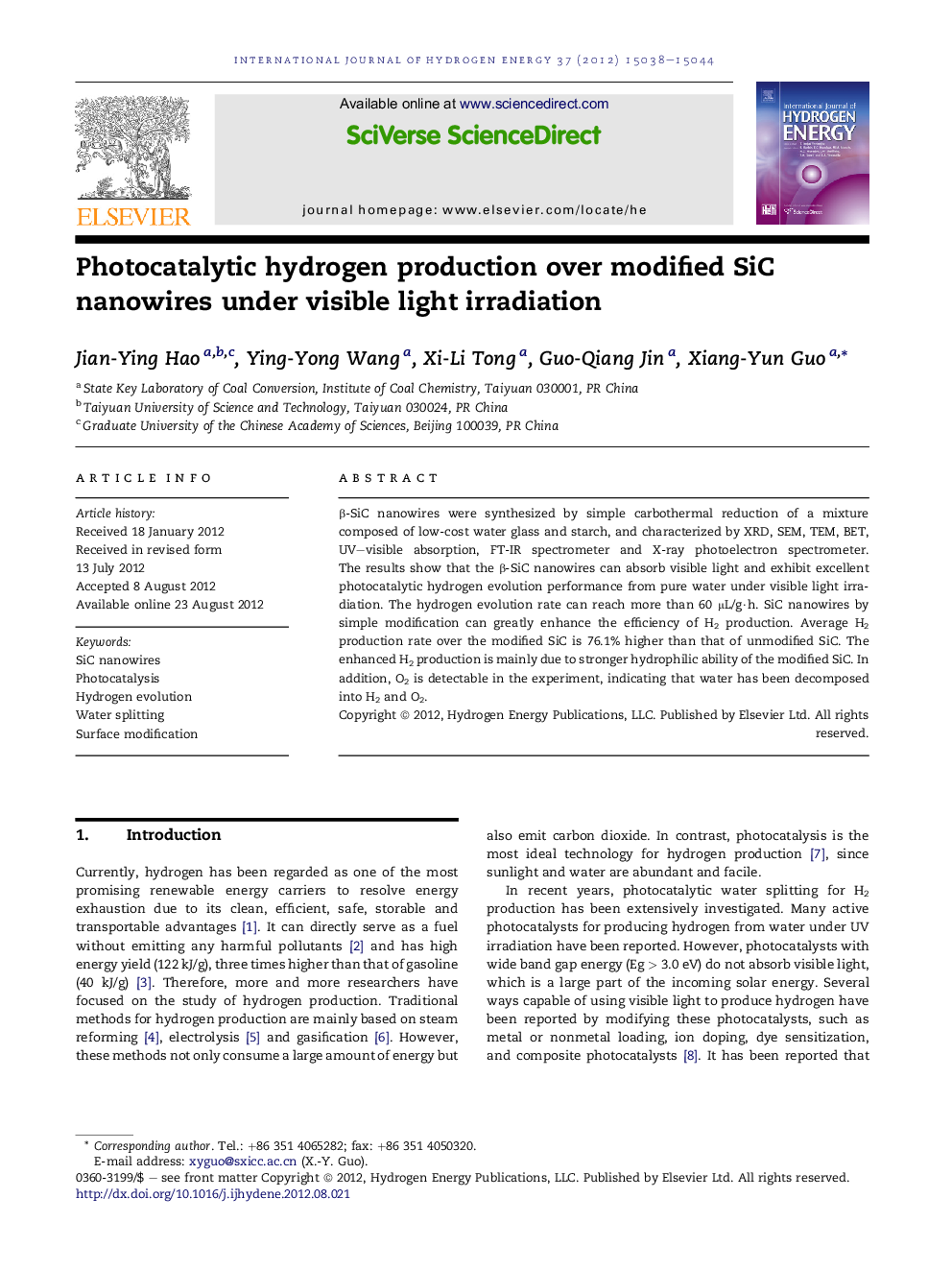| Article ID | Journal | Published Year | Pages | File Type |
|---|---|---|---|---|
| 1274511 | International Journal of Hydrogen Energy | 2012 | 7 Pages |
β-SiC nanowires were synthesized by simple carbothermal reduction of a mixture composed of low-cost water glass and starch, and characterized by XRD, SEM, TEM, BET, UV–visible absorption, FT-IR spectrometer and X-ray photoelectron spectrometer. The results show that the β-SiC nanowires can absorb visible light and exhibit excellent photocatalytic hydrogen evolution performance from pure water under visible light irradiation. The hydrogen evolution rate can reach more than 60 μL/g·h. SiC nanowires by simple modification can greatly enhance the efficiency of H2 production. Average H2 production rate over the modified SiC is 76.1% higher than that of unmodified SiC. The enhanced H2 production is mainly due to stronger hydrophilic ability of the modified SiC. In addition, O2 is detectable in the experiment, indicating that water has been decomposed into H2 and O2.
► β-SiC nanowires were synthesized using water glass and starch as raw materials. ► SiC nanowires can split water into hydrogen under visible light irradiation. ► SiC nanowires exhibit stable and efficient photocatalytic activity. ► The surface modification can greatly enhance the hydrogen production rate.
